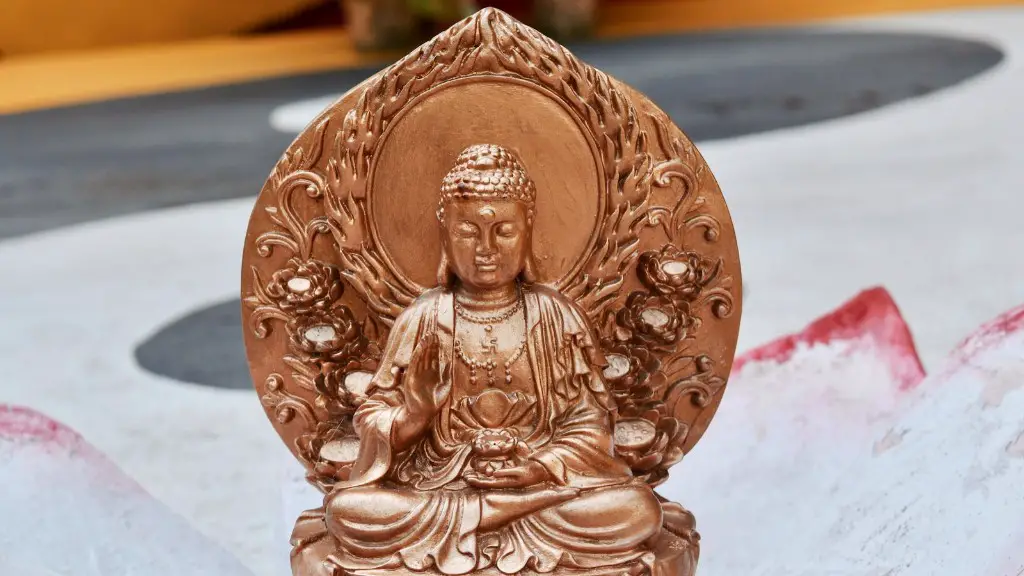The second noble truth in Buddhism is the truth of the origin of suffering. This truth states that the cause of suffering is attachment. Attachment leads to desire, and desire is the root cause of suffering. The Buddha taught that the only way to end suffering is to let go of attachment.
The second noble truth in Buddhism is the truth of the origin of suffering. This means that suffering has a cause, and it is not just something that happens randomly. The cause of suffering is grasping and attachment. When we grasp and cling to things, we create suffering for ourselves. This can be seen clearly in the way that we often suffer when we lose something that we are attached to. We also suffer when we don’t get what we want, or when things don’t go the way we want them to. So, the second noble truth is the truth that grasping and attachment are the cause of suffering.
What are the 4 Noble Truths of Buddhism?
The four noble truths of Buddhism are essential to understanding the religion and achieving enlightenment. The first truth is that suffering exists and is inherent in life. The second truth is that suffering is caused by our desires and attachments. The third truth is that suffering can be ended by releases these desires and attachments. The fourth truth is the way to achieve this release, which is through the Eightfold Path.
The Buddha taught that the root of all suffering is desire, tanhā. This is because when we desire something, we are attached to it. And when we are attached to something, we suffer when we don’t get it, or when we lose it. The Buddha believed that the way to end suffering is to end our attachment to things. This doesn’t mean that we should stop wanting things – but we should want things in a different way. We should want things without being attached to them.
What is the third noble truth of Buddhism
The Third Noble Truth is the solution to suffering. It is the end of craving. By attempting to stop all craving, Buddhists can break the cycle of craving and arising. In this way, they will no longer be reborn into another life of suffering.
The Second Noble Truth is important because it teaches us that there is a cause of suffering and that the cause of suffering is attachment to the three kinds of desire. This is important because it means that we can do something about our suffering by changing our attitude and our behaviour.
What is the first noble truth of Buddhism?
The First Noble Truth is that there is suffering, or dukkha. This suffering can be understood in three ways: as the suffering of pain, the suffering of change, and the suffering of conditioned existence. The second Noble Truth is that this suffering can be ended by uprooting its causes. The third Noble Truth is that there is a path to the end of suffering, which is the Noble Eightfold Path.
The Four Noble Truths are important because they help us to understand the scope and nature of our suffering and find suitable remedies for it. They are relevant to human psychology and our existence, and enable us to find ways to improve our lives.
What does the 2nd Noble Truth say?
Buddha found that the root causes of suffering are craving and desire, and ignorance. The power of these things to create suffering is what Buddhists call The Second Noble Truth. By watching people, Buddha was able to see that these were the main drivers of suffering in the world. He then devoted his life to helping others learn how to overcome these things and find liberation from suffering.
The second Noble Truth, also known as samudaya, states that desire, greed, and self-centeredness lead to suffering. By understanding this Truth, we can see how these things cause suffering in our lives and work to let them go. When we let go of our attachments and desires, we are free from suffering.
What does the second universal truth mean
There are three universal truths that everyone must come to accept: everything is impermanent and ever-changing, impermanence leads to suffering, and the self is not personal and unchanging. Without accepting these truths, it will be difficult to find true happiness in life.
The fifth noble truth, discovered by Briss, is that all other noble truths are subject to change without notice. This last truth is the noblest of the five, as it shows that the other truths are not set in stone, and can change over time. This is an important discovery, as it allows for flexibility and adaptation in the face of change.
What religion does the 4 Noble Truths belong to?
The four noble truths are:
1. All life is characterized by suffering.
2. Suffering is caused by our attachment to things that are impermanent.
3. Suffering can be ended by letting go of our attachment to impermanent things.
4. There is a path that leads to the end of suffering, and that path is the Eightfold Path.
The two truths refer to different levels of reality. The conventional truth is the relative, mundane level of reality, which includes our everyday experience. The ultimate truth is the absolute, transcendent level of reality, which is beyond our everyday experience. The two truths are not mutually exclusive, but are complementary. The ultimate truth is the higher truth, and the conventional truth is the lower truth.
What is the 4th Noble Truth lead to
The Fourth Noble Truth is the truth of the Path that leads to the cessation of suffering. This path is often referred to as the Noble Eightfold Path. The eight steps of the path are as follows:
1. Right Understanding: This step involves understanding the Four Noble Truths.
2. Right Thought: This step involves letting go of negative thoughts and replacing them with positive ones.
3. Right Speech: This step involves speaking kindly and truthfully.
4. Right Action: This step involves acting in ways that are beneficial and cause no harm.
5. Right Livelihood: This step involves choosing a job or career that does not cause suffering.
6. Right Effort: This step involves making an effort to Practice the Noble Eightfold Path.
7. Right Mindfulness: This step involves being aware of your thoughts, words, and actions.
8. Right Concentration: This step involves focusing your mind on positive things.
The Four Noble Truths are the foundation of Buddhist teaching. They are the truth of suffering, the truth of the cause of suffering, the truth of the end of suffering, and the truth of the path that leads to the end of suffering.
The truth of suffering is that life is full of suffering. This suffering is caused by our desires and our attachment to things. The truth of the cause of suffering is that our desires and attachment lead to suffering because they are never satisfied. The truth of the end of suffering is that it is possible to end our suffering by letting go of our desires and attachment. The truth of the path is that the path to the end of suffering is the Eightfold Path.
The Four Noble Truths are important because they show us that suffering is real and that it has a cause. They also show us that there is a way to end our suffering. The Eightfold Path is the way to end our suffering and to find true happiness.
What is the second component of the Noble Eightfold Path?
The eight elements of the path are:
1. Correct view – an accurate understanding of the nature of things, specifically the Four Noble Truths.
2. Correct intention – avoiding thoughts of attachment, hatred, and harmful intent.
3. Correct speech – refraining from verbal misdeeds such as lying, divisive speech, etc.
4. Correct behavior – avoiding physical misdeeds such as killing, theft, and sexual misconduct.
5. Correct livelihood – avoiding occupations which involve harming others, such as selling weapons or drugs.
6. Correct effort – making a concerted effort to develop wisdom and compassion, and to let go of negative thoughts and emotions.
7. Correct mindfulness – maintaining continual awareness of the present moment.
8. Correct concentration – cultivating a single-pointed focus on an object of meditation.
The first noble truth is that life is full of suffering. This suffering can be physical, mental, or emotional. It can be caused by birth, old age, sickness, and death. It can be caused by poverty, hunger, and thirst. It can be caused by being separated from loved ones. It can be caused by not getting what we want.
The truth of suffering is not meant to make us despair. Rather, it is meant to help us see the value of liberation from suffering. The Buddha is not saying that life is bad and we should all try to escape it. He is saying that suffering is a part of life and we should be aware of it. We should also be aware that there is a way to end our suffering.
What are the 2 types of truth
There are two types of truth: normative and subjective. Normative truth is what we, as a group, agree is true. For example, English speakers agree to use the word “day” to name that time when the sky is lit by the sun. Subjective truth is how the individual sees or experiences the world. For example, one person might say “today is a good day for me.”
The doctrine of two truths is an important part of Buddhist thought. It teaches that there are two ways of viewing the world: as things appear to be, and as they are. In other words, existence is both relative (or conventional) and absolute.
This doctrine is important because it helps us to understand that our perceptions of the world are not necessarily accurate. We see things through the lens of our own biases and beliefs, which can distort our view. By understanding that there is an absolute truth beyond our perceptions, we can start to see the world more clearly.
Warp Up
The Second Noble Truth in Buddhism is the truth of the origin of suffering. It states that suffering arises from craving or attachment.
The Second Noble Truth is that the origin of suffering is craving. This is because when we crave things, we become attached to them. And when we become attached to things, we suffer when we lose them.



